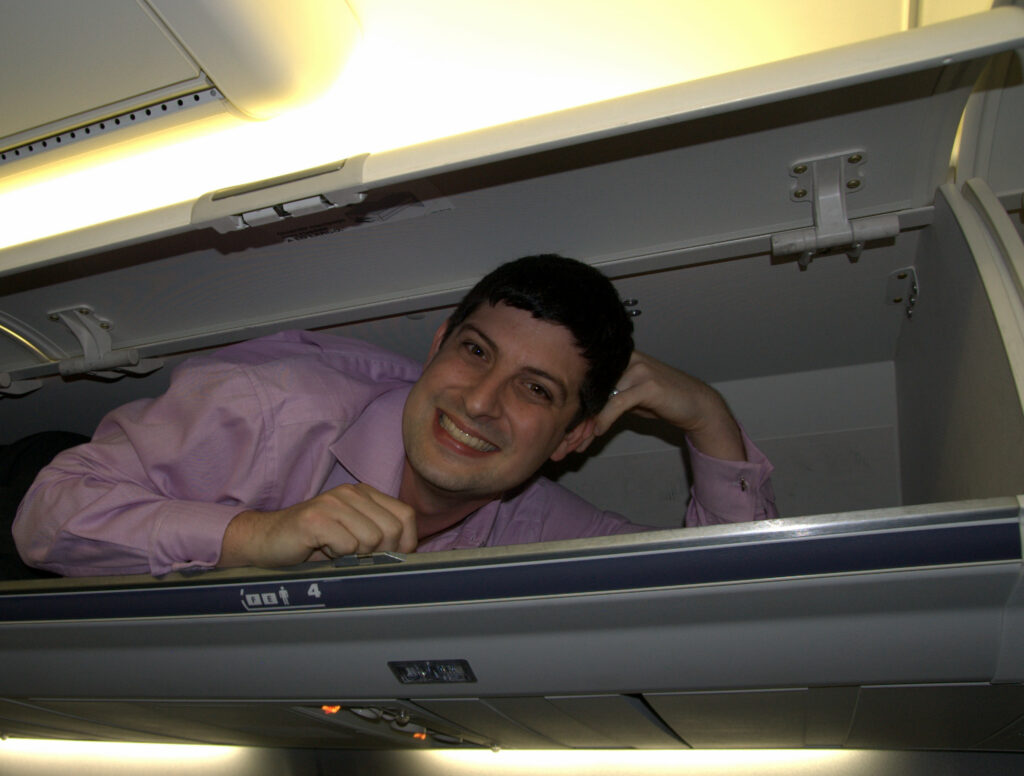
Focusing on ‘net zero cabins’ that prioritise passenger comfort, Aircraft Interiors Expo (AIX)– in partnership with Inflight Magazine – brought together a number of aviation leaders to discuss the industry’s progress and challenges, as well as how collaboration, recycled materials and weight-saving strategies need to be improved.
Leading the panel discussion was Satu Dahl, the Editor of Inflight Magazine, who was joined by Nils Stoll, CEO of Krüger Aviation; Seth Miller, Founder and Editor-in-Chief of PaxExAero; Antonio Ficca, Vice President of Marketing of Expliseat; Karl Hewson, Director of Technology and Development of Zotefoams and David Sandiford, Manager Aviation – Transportation Accounts Department – Enterprise Accounts and International at Mohawk Group.
Future ready, together

Weight-saving designs dominated the discussion as panellists identified them as the single most impactful strategy for reducing aviation’s environmental footprint. Karl Hewson, Director of Technology and Development at Zotefoams, highlighted the traditional focus on lightweight materials for cabin interiors that minimise fuel burn over the lifetime of an aircraft.
However, he emphasised that the focus needs to be on the combined impact of all materials used, not just individual components. Discussing weight as a key metric for measuring environmental impact, Antonio Ficca, VP of Marketing at Expliseat, added that it “cannot be taken in isolation. You can be lighter, but made of non-recycled or recyclable materials, for example.”
Reclaimed materials and parts were another key focus of the discussion. Panellists explored the possibility of using recycled materials in cabin components and even remanufacturing existing seats to create a more circular economy within the industry.
Mr Hewson called for a “dollar per sustainability metric”, adding that “weight savings offer airlines and manufacturers clear CapEx and OpEx benefits, driving their willingness to invest. However, incentives for end-of-life potential seem lacking.”

Seth Miller, Founder and Editor-in-Chief of PaxExAero, spoke on behalf of passenger concerns around compacting cabin space and the trade-off between lightweight and experience. “A smaller lavatory might be lighter, but if everybody going in washing their hands ends up splashing water all over themselves, they’re not going to be happy that the flight burned 0.1 fewer kilos of carbon dioxide. Instead, they’re going to be annoyed that their pants are wet.”
Meanwhile, Nils Stoll, CEO of Krüger Aviation shared modern methods of connecting with the consumer to share the sustainable credentials of the cabin. He suggested the use of QR codes to communicate weight and fuel saving to passengers. The ultimate aim being to provide sustainable cabins with a meaningful impact on consumers, enhancing their experience rather than potentially ruining it.

David Sandiford, Manager Aviation – Transportation Accounts Department – Enterprise Accounts and International, Mohawk Group highlighted the disconnect between the suppliers and buyers, “we’re seeing an increased need for sustainability attributes, but, if the most environmentally sustainable product in the world is $10 more expensive per square yard, I’m going to have a hard time selling it in the marketplace.” But, Mr Ficca confirmed that he has observed a shift in the right direction, with sustainability increasingly being brought to the table in discussions with airline buyers.
Taking responsibility for the cost
With Mr Ficca asking fellow participants who should pay the price of sustainability, the panel acknowledged the need for investment in sustainable solutions. However, opinions differed on who should bear the financial responsibility.
While some suggested cost-sharing among various stakeholders, others emphasised the importance for the industry to invest in its future, considering the recent boom as passenger travel bounces back. Mr Stoll commented on the subject, “At the end of the day, if you are not willing to invest in sustainability, I guess you won’t be a supplier in the future anymore because this is a major topic. As an industry, we have to invest into the future.”
From the interiors supplier perspective, Mr Sandiford agreed that while they are beyond carbon neutral, a major challenge Mohawk faces is the evolving demand from decision-makers within the industry.
Decision-makers are increasingly seeking to understand the sustainable attributes of products, but there is a lack of standardised measurements to make these comparisons between products, “whether it’s an EPD or any other tools used to evaluate each product”.
He highlighted the growing pressure to balance the need for sustainable features with cost constraints, pointing out that even the most sustainable product might struggle to gain traction if it comes at a significantly higher price point.

Elaborating on the topic, Mr Miller hypothesised whether, “passengers are willing to going go out of their way and actively choose to invest in sustainability, as opposed to expecting that airlines are. Assuming the industry is doing the right thing for sustainability.” Other panellists voiced concerns that such measures could increase costs for airlines which would ultimately be passed on to consumers.
On a another note, Mr Stoll pointed out that the market is rapidly evolving, creating an opportunity for the industry to transform its operations. This shift presents a chance to open and prioritise profit margins for sustainable solutions, making environmental responsibility not just the right thing to do, but also a financially sound strategy.
Considering external perspectives
Mr Stoll emphasised the importance of showcasing the positive efforts of the aviation industry in achieving its sustainability goals. He highlighted the industry’s negative media portrayal and stressed the need to counter this narrative by demonstrating the sector’s initiatives that are driving a more sustainable future.

However, Mr Ficca cautioned that the aviation industry is not effectively communicating its sustainability efforts to the public. He argued that the sector needs to be more transparent and clearer in its messaging, similar to other industries, like rail and electric vehicles, that have successfully positioned themselves as environmentally conscious. With lower CO2 emissions per passenger than flights, rail companies emphasise the environmental benefits of train travel through consumer marketing and advertising. Mr Hewson emphasised that the aviation industry’s sustainability efforts are rightly centred on fuel savings achieved through combined lightweight design, though admittedly a less consumer-facing area of aviation.
Mr Miller wondered whether the small, incremental steps being made towards sustainability are enough to achieve the industry’s ambitious net-zero targets. He emphasised the importance of educating the public about these efforts and ensuring they understand the progress being made, even if the changes to the passenger experience are not readily apparent.
Take-off for collaboration
He went on to explain that “the next step is turning thoughts into actions to move the industry forward, and faster.” Mr Ficca spoke on behalf of all participants to share that industry members are uniting to discuss their experiences and challenges and hopes this is evidence that things are moving in the right direction.
Concluding the discussion, Mr Stoll said, “if we see people around the world, people with the same mission, with the same heart for sustainability, we have to bring them together.”
Find the full write-up of the roundtable discussion on the Inflight Magazine website, here.


